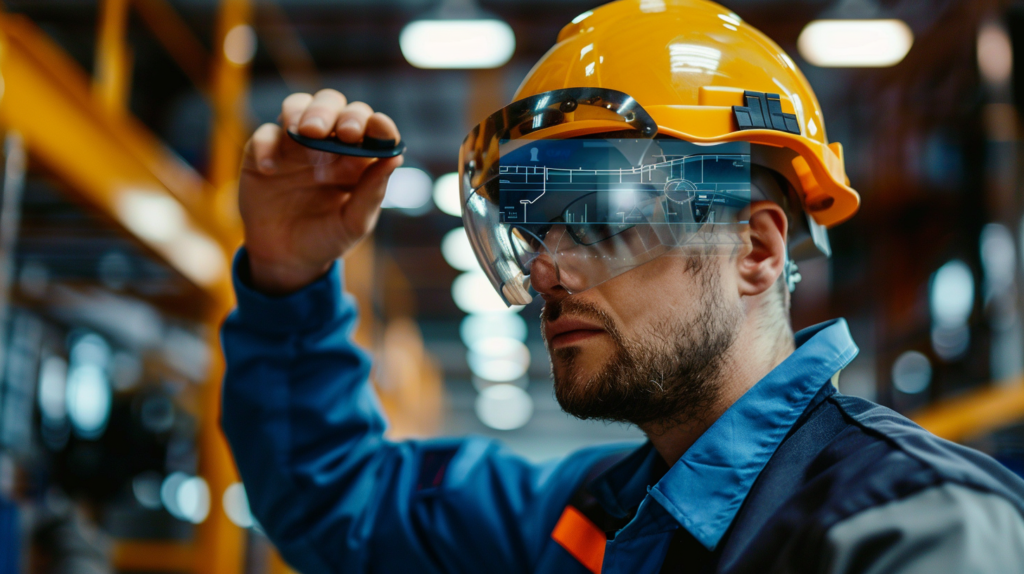In an era where efficiency is paramount, Augmented Reality (AR) stands out as a transformative technology in industrial settings. By overlaying digital information onto the real world, AR provides technicians with invaluable insights and data directly in their field of vision, thereby revolutionizing maintenance and repair processes.
This article explores how AR is being utilized to enhance industrial operations, reduce downtime, and foster significant cost savings.

The Rise of AR in Industry
Augmented Reality has rapidly transitioned from a novelty in gaming and entertainment to a serious tool in heavy industries such as manufacturing, oil and gas, and aviation. The capacity of AR to merge digital data with physical environments makes it particularly useful for complex industrial tasks involving machinery and equipment maintenance.
Real-World Applications
One of the most compelling applications of AR technology is in the field of maintenance and repair. For instance, companies like Boeing and Airbus use AR glasses to aid technicians in airplane maintenance.
These AR devices display each step in the repair process over the actual components being fixed, guiding the technician through the process, minimizing errors, and significantly speeding up overall repair time.
Similarly, in automobile manufacturing, companies like Ford and BMW have adopted AR headsets for their assembly lines.
Technicians receive real-time guidance and support through these headsets, which display instructions and diagnostics over the parts they are working on, thus enhancing precision and reducing the chance of mistakes.
Enhancing Efficiency and Accuracy
AR provides hands-free operation, which is a significant advantage in industrial environments. It allows workers to access information and guidance without having to stop their work to consult manuals or computers.
For example, a technician repairing a complex piece of machinery can see schematic diagrams or maintenance history overlaid directly on the equipment. This not only speeds up the workflow but also improves the accuracy of repairs, as the information is contextually relevant and immediately accessible.
Training and Expert Support
Training is another area where AR is making a big impact. New employees can receive on-the-job training without the constant physical presence of a trainer.
AR applications can simulate various scenarios for trainees, providing them with a rich learning experience that is both safe and controlled.
Moreover, AR facilitates remote expert support where experienced technicians can guide onsite workers through complex repairs from anywhere in the world. Using AR, the expert can see exactly what the onsite worker is seeing and provide real-time feedback and instructions, which is particularly valuable in specialized industries where expert knowledge is scarce.
Safety Improvements
Safety is a paramount concern in any industrial operation. AR can significantly enhance worker safety by providing warnings and safety information in real time.
For instance, if a technician is working on high-voltage equipment, the AR system can warn them if they are using the wrong tool or if they are in a hazardous zone. This proactive approach to preventing accidents is crucial for maintaining a safe work environment.
Challenges and Considerations
Despite its numerous benefits, the implementation of AR in industrial maintenance is not without challenges.
Issues such as the high cost of AR devices, the need for substantial data integration, and concerns about worker privacy and data security are significant.
Furthermore, there is a learning curve associated with the adoption of this technology, and its effectiveness depends on the quality of the digital content and the user interface design.
Also Check: Asset Management Software Tips
Conclusion
The integration of Augmented Reality into maintenance and repair represents a leap forward in industrial operations.
As AR technology continues to evolve, its adoption is expected to become more widespread, driving significant improvements in efficiency, accuracy, and safety. For industries looking to maintain a competitive edge, investing in AR technology is not just an option but a necessity to stay relevant in the rapidly changing technological landscape.
This article has outlined the practical applications, benefits, and challenges of AR in industrial maintenance and repair, highlighting its potential to transform traditional practices into next-generation efficiency and reliability.
As industries continue to innovate, AR stands as a beacon of technological advancement, poised to redefine the very nature of industrial work.
